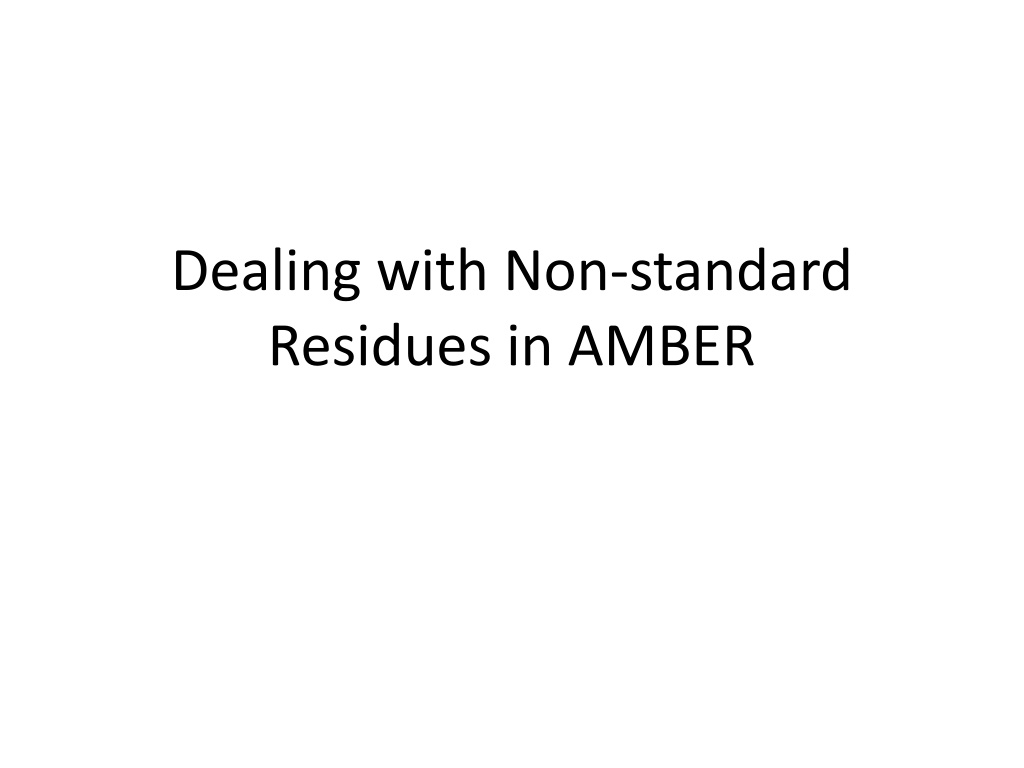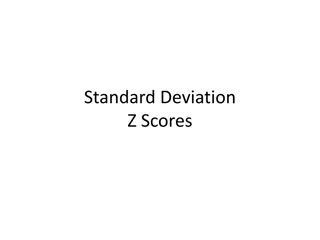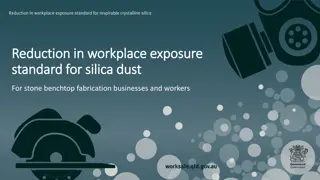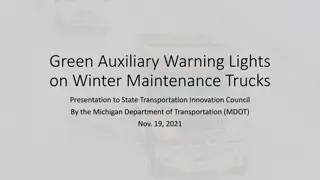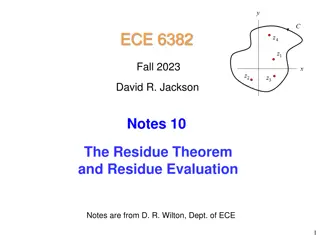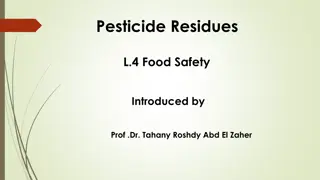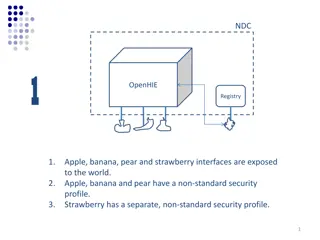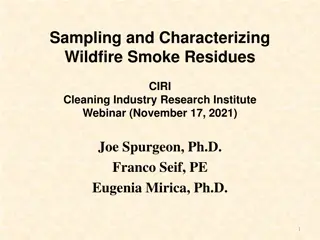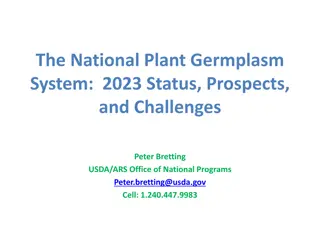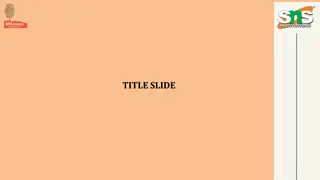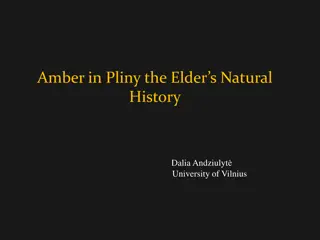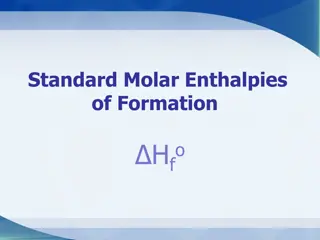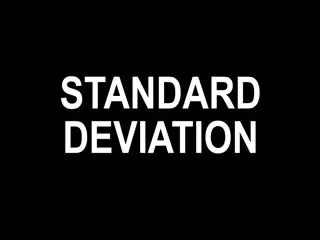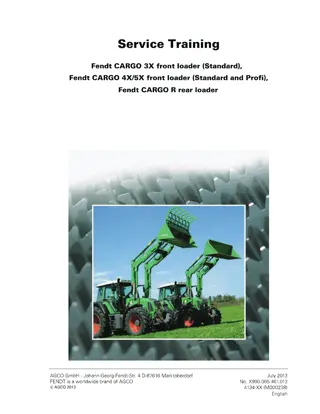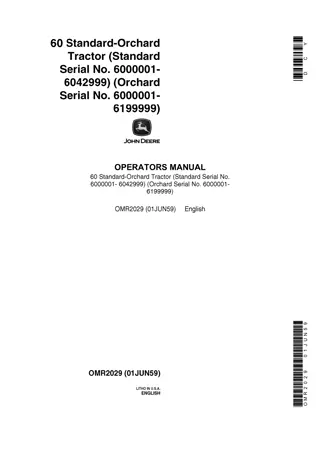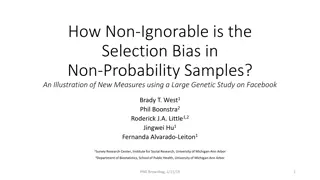Dealing with Non-standard Residues in AMBER
This informative content covers the parameters, programs, and steps involved in dealing with non-standard residues in AMBER. Learn about generating parameters for non-standard residues, selecting atom types, defining a topology, calculating partial charges, and more.
Download Presentation

Please find below an Image/Link to download the presentation.
The content on the website is provided AS IS for your information and personal use only. It may not be sold, licensed, or shared on other websites without obtaining consent from the author.If you encounter any issues during the download, it is possible that the publisher has removed the file from their server.
You are allowed to download the files provided on this website for personal or commercial use, subject to the condition that they are used lawfully. All files are the property of their respective owners.
The content on the website is provided AS IS for your information and personal use only. It may not be sold, licensed, or shared on other websites without obtaining consent from the author.
E N D
Presentation Transcript
Dealing with Non-standard Residues in AMBER
Parameters for Standard Residues AMBER14 comes with a set of force fields encompassing several standard residues that have already been parameterized: Various parameters for Proteins, DNA, and RNA FF12SB, FF14SB Different water models, ions, solvents TIP3P, TIP4P Parameters of sugars GLYCAM Parameters for Lipids Lipid14
Programs that Aid in Generating Parameters Antechamber (+GAFF) Good for parameterizing most organic molecules C, N, O, S, P, H, F, Cl, Br, I etc. The main driver atomtype, sqm, bondtype, am1bcc, espgen Metal Center Parameter Builder (MCPB) Used for parameterizing proteins with metal centers Paramfit Helpful in parameterizing missing torsion parameters or if existing parameters are inadequate
Steps to Building Parameters for Non- standard Residues OH Cl Define a topology Select atom types 2-Chloro-Benzyl alcohol Calculate partial charges Check for missing force field parameters
Define a topology Draw the molecule in xleap (or your choice of editor) $xleap >createResidue MOL >edit MOL >savepdb MOL MOL.pdb
Select atom types ho The GAFF force field Designed for compatibility with the Amber protein forcefields, Uses lower case atom types. Exception Metal types oh ch c3 ch cl ha ca ca ca ca ca ha ca ha ha 3 different types of hydrogen 2 different types of carbon $>antechamber i MOL.pdb fi pdb o MOL.mol2 fo mol2
Calculating Partial Charges 0.46 Charge Models AM1-BCC (AM1 w/ Bond Corrected Charges) Charges are derived from semi-empirical calculations RESP (Restrained Electrostatic Potential) Charges derived from QM calculations HF/6-31G* [ iop(6/33=2) ] -0.73 00.0 0.26 00.0 -0.13 19.0 0.24 -0.26 -0.12 -0.11 -0.04 14.0 -0.21 0.14 0.16 Example: $>antechamber i MOL.log fi gout o MOL.charg.mol2 fo mol2 c resp
Check for Missing Force Field Parameters The program parmchk can be used to check for missing parameters: Bond, Angles, Dihedrals, etc. $>parmchk i Mol.mol2 o Mol.frcmod f mol2 remark goes here MASS BOND "ATTN: NEEDS REVISION You need to provide the parameters ANGLE DIHE ca-ca-f -ca 1 0.000 0.000 0.000 ATTN, need revision (Example Only) IMPROPER ca-ca-ca-ha 1.1 180.0 2.0 General improper torsional angle (2 general atom types) NONBON
Build a Library File !!index array str "MOL" !entry.MOL.unit.atoms table str name str type int typex int resx int flags int seq int elmnt dbl chg "C1" "ca" 0 1 131072 1 6 -0.080300 "C2" "ca" 0 1 131072 2 6 -0.096000 "C3" "ca" 0 1 131072 3 6 -0.131000 "C4" "ca" 0 1 131072 4 6 -0.122000 "C5" "ca" 0 1 131072 5 6 -0.126000 "C6" "ca" 0 1 131072 6 6 0.015400 "C7" "c3" 0 1 131072 7 6 0.174700 "O8" "oh" 0 1 131072 8 8 -0.600800 "Cl9" "cl" 0 1 131072 9 6 -0.102400 "H10" "ha" 0 1 131072 10 1 0.160000 "H11" "ha" 0 1 131072 11 1 0.137000 "H12" "ha" 0 1 131072 12 1 0.136000 "H13" "ha" 0 1 131072 13 1 0.146000 "H14" "h1" 0 1 131072 14 1 0.041700 "H15" "h1" 0 1 131072 15 1 0.041700 "H16" "ho" 0 1 131072 16 1 0.406000 OH #create LIB file source leaprc.gaff MOL=loadmol2 BCL.mol2 loadamberparams BCL.frcmod saveoff MOL MOL.lib Check MOL Cl Completely defines a molecule in AMBER terms: atom types, charges, default geometries
Non-Standard Residues in Protein Example Plastocyanin (1PLC.pdb) Involved in electron transfer Cu+ is coordinated by HIS, CYS, MET Assuming no change in AA bound to the Cu+ ion Cu+, single fixed charged
Format the PDB To Do List Resolve alternate conformations ALYS BLYS By default LEaP only uses the A conformations Rename residues bound to Cu+ HIS HIE Proton placed on epsilon nitrogen CYS CYM Deprotonated form CYS
Build the Copper Residue Library copy the Cu into its own "pdb": HETATM 1548 CU CUA 100 7.050 34.960 18.716 1.00 8.78 1PLC1671 Load the pdb into xleap and edit the single atom in it and save the unit as a library file: cua = loadpdb cu.pdb edit cua saveoff cua cua.lib
Check for Missing Parameters > loadoff cua.lib > prot = loadpdb protein_cu_complex.pdb > bond prot.37.ND1 prot.100.CU > bond prot.87.ND1 prot.100.CU > bond prot.84.SG prot.100.CU > bond prot.92.SD prot.100.CU > check prot
Provide Parameters via Frcmod File - Define a copper atom (including vdw parameters) - Provide bond, angle constants for all Cu 1-2, 1-3 interactions - Only very simple dihedrals are provided >loadoff cua.lib >loadamberparams cua.frcmod > prot = loadpdb protein_cu_complex.pdb > bond prot.37.ND1 prot.100.CU > bond prot.87.ND1 prot.100.CU > bond prot.84.SG prot.100.CU > bond prot.92.SD prot.100.CU > solvateoct prot TIP3PBOX 12 > addions prot Na+ 0 > saveamberparm prot prot.prm prot.rst
Parameter Database http://www.pharmacy.manchester.ac.uk/bryce/amber/ Contains Parameters for several: Cofactors, Organic Molecules, Ions, Solvents Boxes, etc. Do not just download their parameters and begin running MD, check their validity
Parmed.py Generates a Lib or Frcmod file from a topology file: Helpful when the parameters of a particular system have been misplaced. >Parmed.py prmtop parmed.in #Generate a Lib & FRCOMD File loadRestrt inpcrd WriteOFF Lib WriteFrcmod FRCMOD
Conclusion There is not necessarily a correct way to build parameters but there is a wrong way Search the literature Justify your assumptions Visualize the MD trajectories
